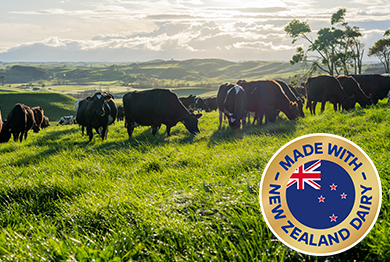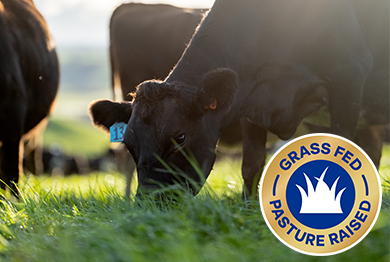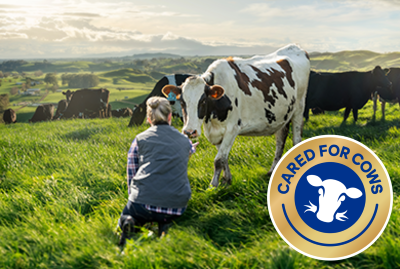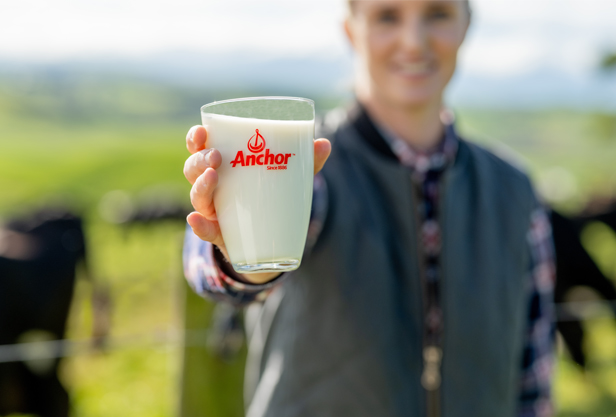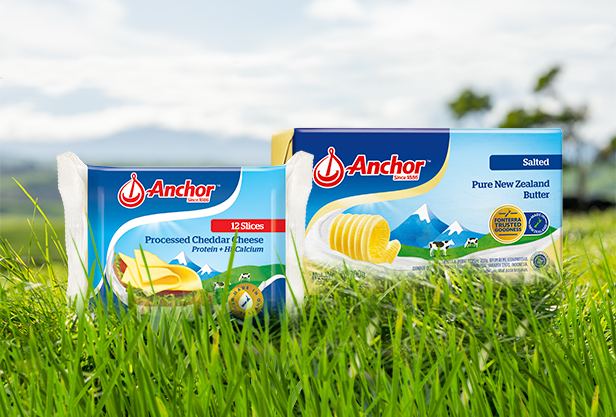References
* NielsenIQ Scantrack, New Zealand Total Supermarket Dairy Sales, Value Share MAT to 02-06-24
** CLA: Kay JK, Roche JR, Kolver ES, Thomson NA, Baumgard LH. (2005) A comparison between feeding systems (pasture and TMR) and the effect of vitamin E supplementation on plasma and milk fatty acid profiles in dairy cows. Journal of Dairy Research 72: 322-332
Beta-Carotene: MacGibbon AKH and Taylor MW. (2006). Composition and Structure of Bovine Milk Lipids in Advanced Dairy Chemistry Volume 2, Lipids, 3rd Ed, (P.F. Fox and P.L.H. McSweeney, eds.) Springer, New York, pp 1-43. O’Callaghan TF, Hennessy D, McAuliffe S, Kilcawley KN, O’Donovan M, Dillon P, Ross RP, Stanton C. (2016). Effect of pasture versus indoor feeding systems on raw milk composition and quality over an entire lactation. J. Dairy Sci. 99:9424-9440.
Vitamin D: Gill BD, Zhu X and Indyk HE (2016) The determination of vitamin D3 and 25-hydroxyvitamin D3 in early lactation and seasonal bovine milk. International Dairy Journal 63 29-34.
^Grass is defined as grass, grass silage, hay and forage crops
The Fonterra New Zealand Grass-Fed Standard requires our cows to be 80% grass fed on a dry matter basis and spend 90%+ of non-milking time grazing outdoors at a minimum.
Our cows are 96% grass fed (on an ‘as consumed’ basis on a rolling three-year average – this is equivalent to 89% on a dry weight basis) and spend 97% of non-milking time outdoors.
The Fonterra New Zealand Grass and Pasture Fed Standard is independently certified by AsureQuality. AsureQuality is an independent Conformity Assessment Body accredited by JAS-ANZ
#Of the top 15 dairy exporting countries (based on annual dairy product export volumes in 2023 and including New Zealand), only Ireland operates a similar pasture-based model to New Zealand.
Based on Irish data presented in O’Brien et al. 2018, dairy cows in Ireland have access to pasture, on average, 255 days per year. In New Zealand, data from Fonterra Farm Dairy Records show that our Fonterra New Zealand cows spend, on average, 97% of their non-milking time outside on pasture which is more than 350 days of a year. This is calculated annually and reported as a rolling three-year average.


